As an Amazon Associate I earn from qualifying purchases.
Caul fat may be one of the more esoteric ingredients in the kitchen, but it is more than worth it to learn how to cook with caul if you work with wild game, or charcuterie.
Here’s a quick primer on cooking with caul fat, how to get it, and how to store it.
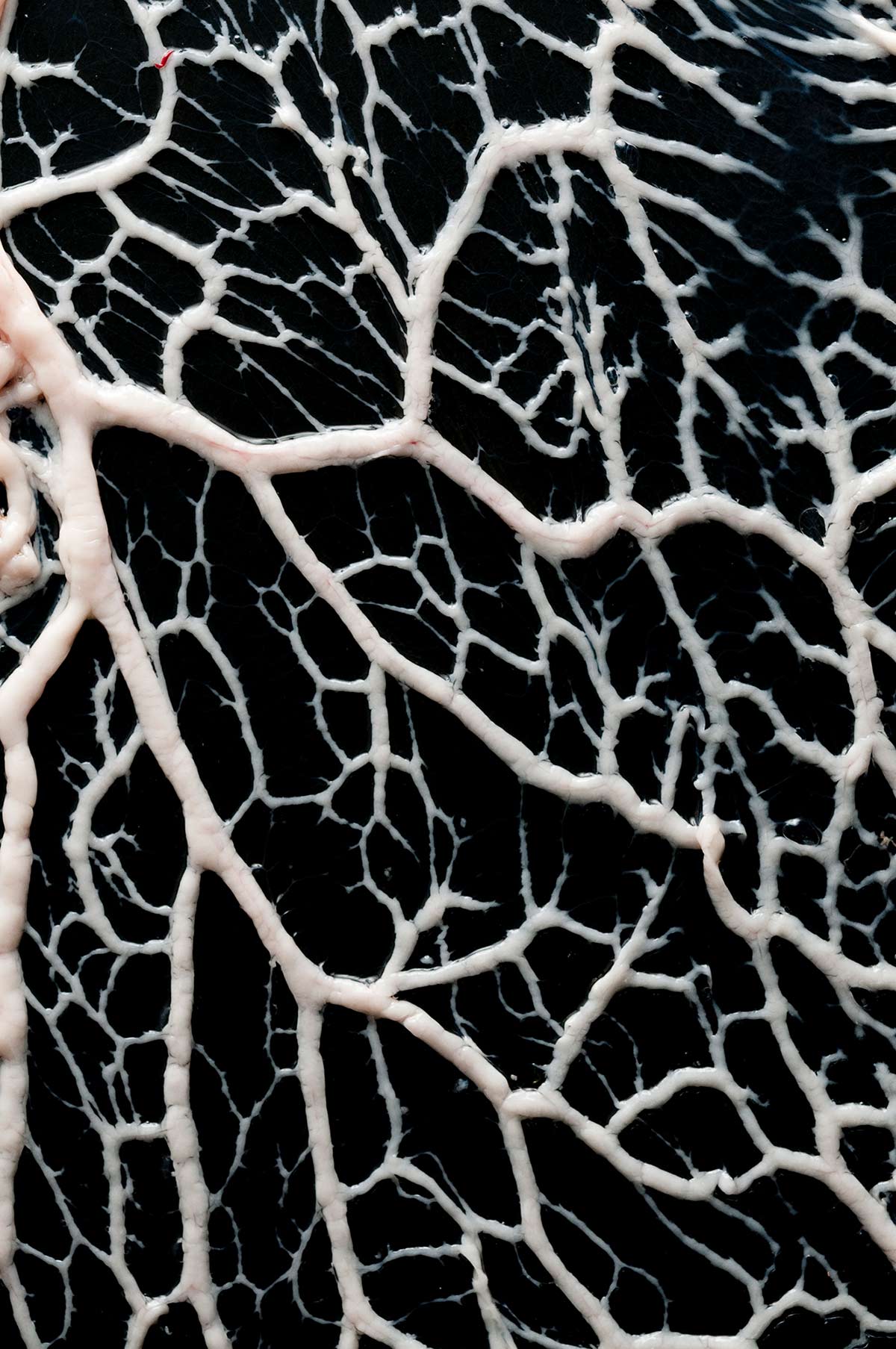
First off, caul fat is the lacey lining of the gut cavity of a variety of animals. All bovids have it, which includes cows, sheep, goats, musk ox, nilgai and bison, to name a few. All cervids have it, too, which includes all the deer, elk and moose and such. And last but not least, all the suiformes, the various piggy things, have caul fat, too — even the pig’s distant ancestor the javelina.
Caul fat is also called the omentum, and I’ve seen it called lace fat, too. It’s crepine in French and redaño in Spanish. It is, as you can see, a spiderweb of fat attached to an invisible membrane.
OK, I can feel some of you squinching your nose. Ew. Innard fat? Walk with me a moment. First, if you are not a hunter, you will almost always be buying pork caul fat that has already been cleaned. It is more or less odorless (although slightly porky), and flavorless. We’ll get to why you still want some in your life in a moment.
Obtaining Caul Fat
To the hunters, recovering caul fat from your animals isn’t terribly hard, but you have to know you want it when you gut the beast. Cut as normal, and you will likely see the lacey membranes around the stomach. I will often slice the caul as I am making this cut, but it’s not a big deal.
Now, you will need to gently lift the caul fat away from the innards, pulling it out as you go. You want it in large pieces, but some rips are inevitable. As you go, drop the sheets of caul into a plastic bag. Caul fat is generally attached close to the diaphragm and the tenderloins, near an animal’s spleen. You know you’re at the edges when the lacey membrane starts to have much larger patches of fat.

Simply rinse your caul fat in cold water, and, if there is still a smell, soak it in more cold water with a little citrus, vinegar or vanilla extract — just a touch, since you don’t want your fat to smell of vanilla. Let that sit in the fridge or other cool place an hour, then rinse with more cold water.
Regardless of whether you bought or collected your caul fat, you want to pat it dry and vacuum seal in portions before you freeze it. When buying caul fat, it is normally sold frozen. Thaw it in the fridge overnight, and then set it in a bowl of warm water. Use what you need, pat the fat dry again, and refreeze. It’ll be fine.
This warm water soak is especially important for any of you working with caul fat from bovids or cervids, meaning all the cow, sheep, goat, deer or elk type animals. The reason is because the fat of those animals is far harder (more saturated) than that of the various piggy things.
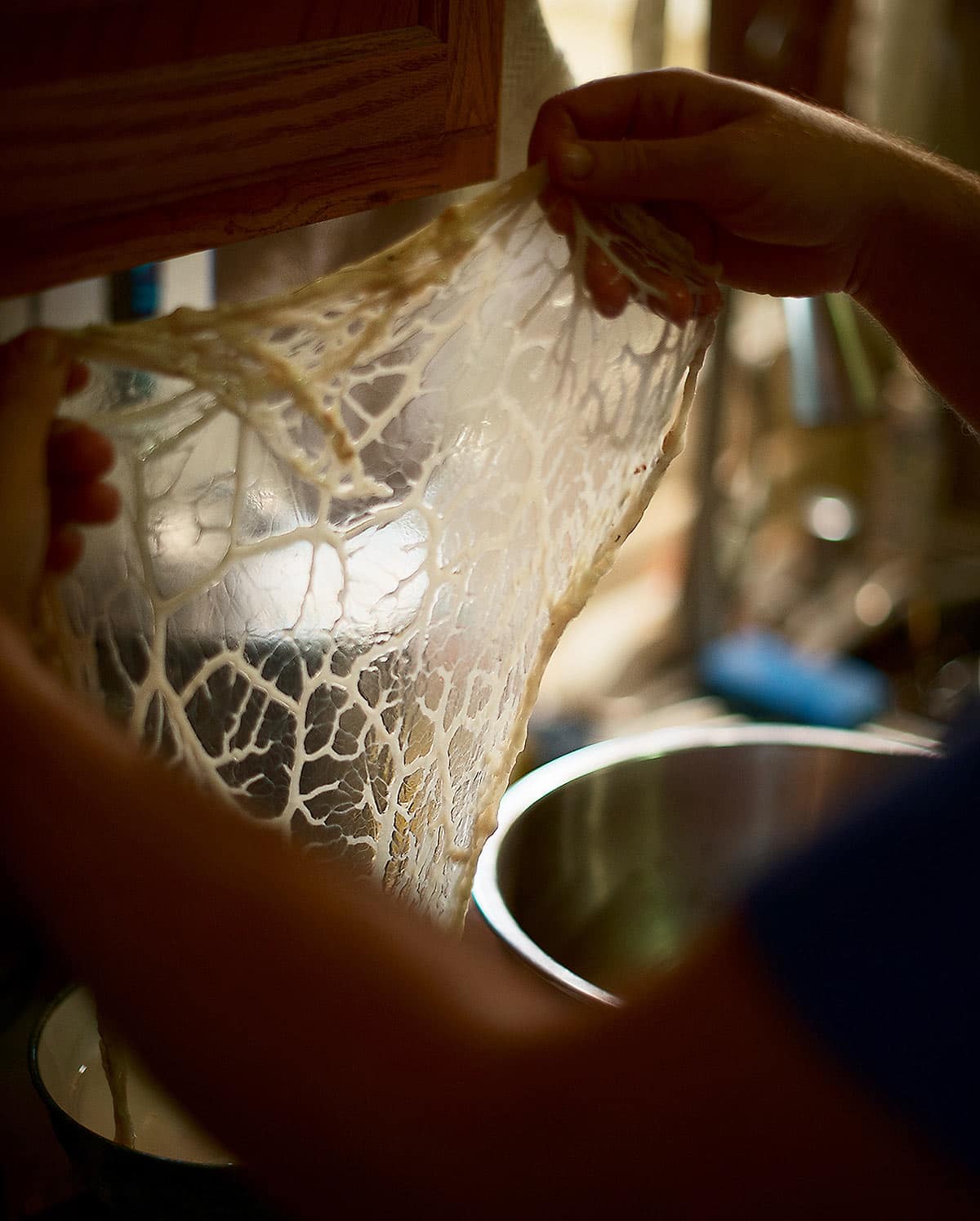
Cooking with Caul Fat
OK, so now you have some cool lacey caul fat. Now what?
This stuff has been so valuable to so many people for so long because of how caul fat works to preserve moisture in otherwise dry meats (and even fish), acts as a wrapper for things like meatballs and sausages, and, more recently, to stick food to other food — typically, say, ground meat or a mousse to the outside of a solid piece of meat.
When you cook it, the fat renders but the membrane holds. So once cooked, caul fat can be easily missed by a distracted diner. But it’s presence will be known by how juicy and lush the item wrapped with it will be.
Historically, the dominant use for caul fat is to wrap some sort of meatball. That’s what I mostly do with it. Two classic recipes employing this are French crepinettes, and the unfortunately named British meatballs known as “faggots.”
Other wrapped meatballs exist in places as disparate as Italy, Russia, and the Middle East (where they use lamb caul), to the Navajo here in the United States.
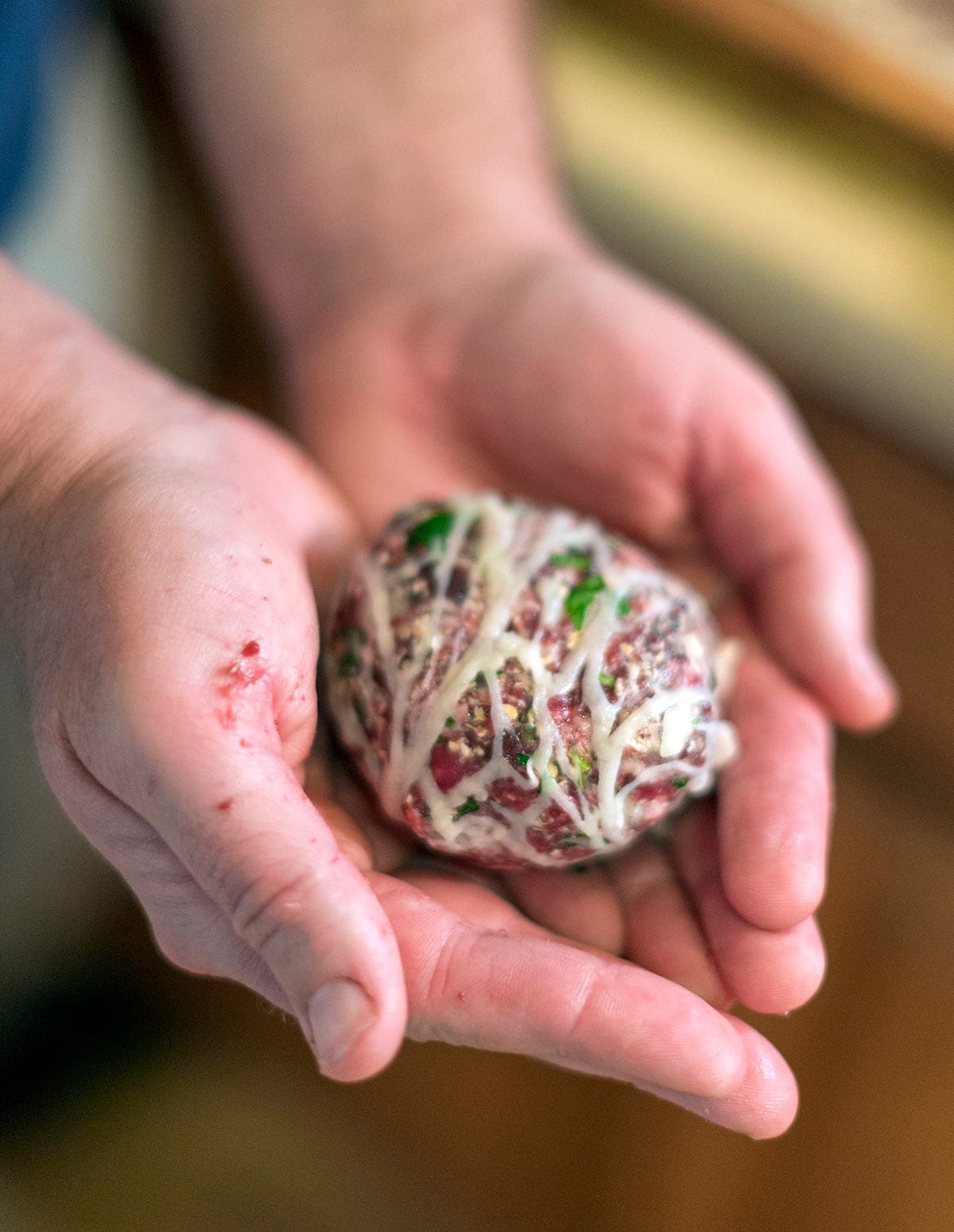
Caul fat is also a spectacular coating for terrines and pâté. I especially like using caul for my wild game terrine. Why? Caul is lighter and less fatty than bacon, which is the normal wrapping.
The other primary use for caul fat is as a wrapper for ultra lean meats — and as hunters, that’s us. Anything with internal marbling, e.g., beef, farmed pork, etc., does not need caul fat. Venison, bison, pronghorn, etc. all do. Rabbit is especially good with it.
Why? Because that gossamer wrapping essentially bastes the meat as it sears, and the membrane holds in moisture. So the net result is a more luscious bite.
Working with Caul Fat
Mechanically, you will need a large working area, a small, sharp knife, and a place to put your wrapped items. One of the greatest things about caul fat is its ability to stick to itself, like Saran Wrap. This is also a trait that can make working with caul maddening. Thus the large working area.
You want to lay out the sheets of fat in large areas, place whatever is going to be wrapped on them, then use the knife to cut pieces to shape. Always use a bit more than you think you need.
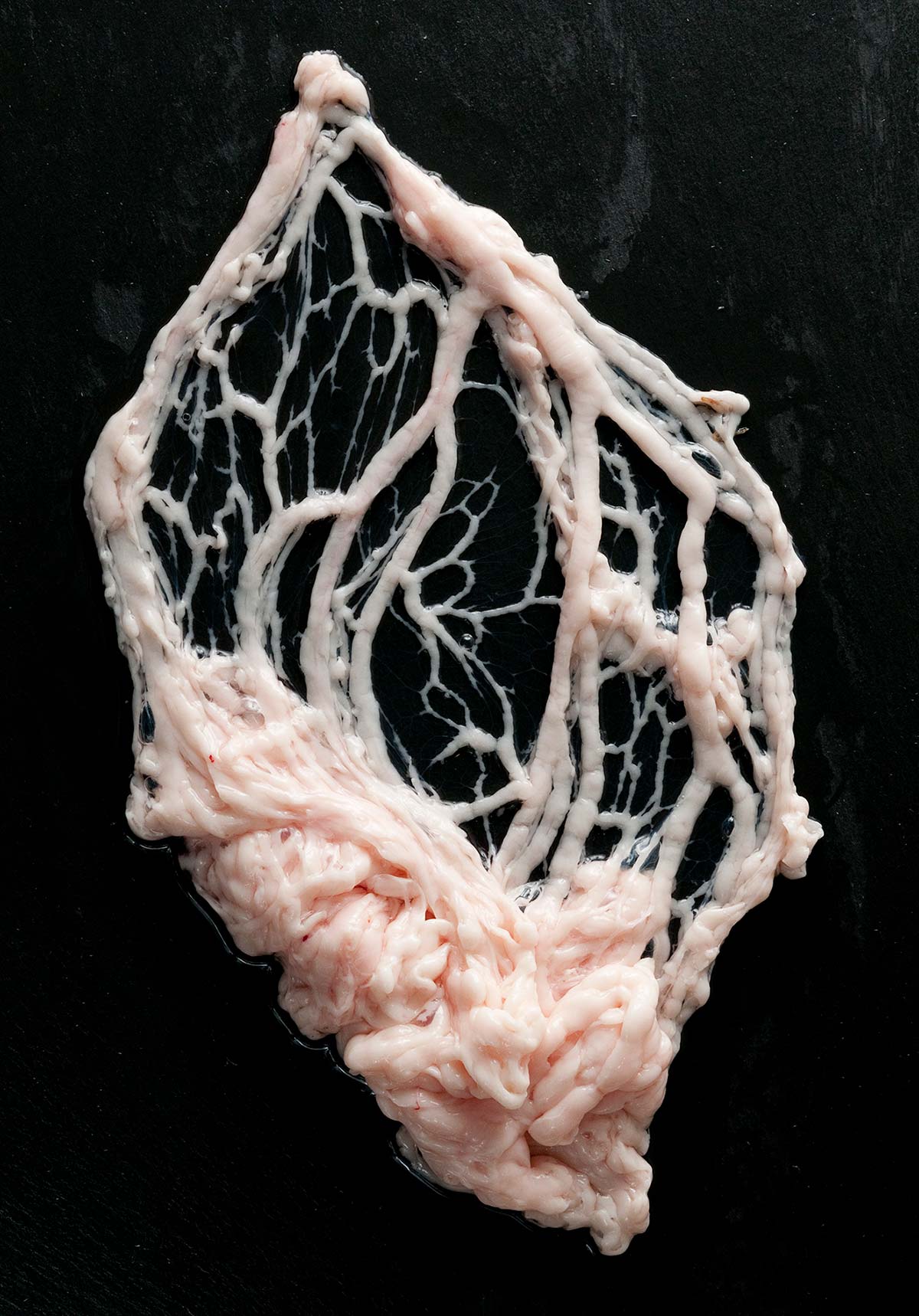
And always, when you are cooking, set the seam down into the pan when you are ready to cook. The sear on the seam seals the caul.
As I mentioned above, the caul from pigs is the finest, in my experience, followed by that from cows and other bovids. I once shot a nilgai, a distant cousin of the cow that runs wild in south Texas, and its caul fat was amazing.
Caul from cervids is nice, but it shares the same issue as cooking with deer fat, in that it gets hard and waxy as it cools. The answer is to sear venison hot and serve it without resting. The caul will hold the moisture, and your guests can then slice and eat at once.
Any scraps left over can be rendered, and although the membrane never goes away, it does get crispy eventually. I generally use scraps from deer caul fat as suet to feed birds.

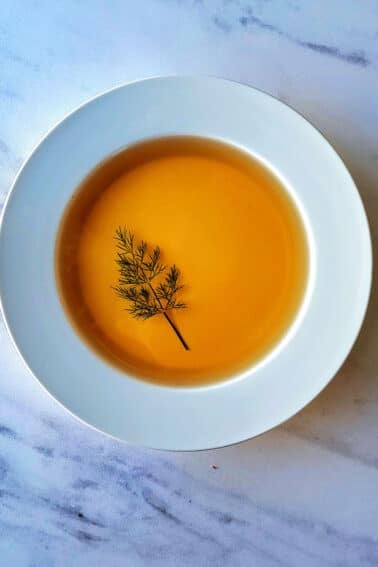
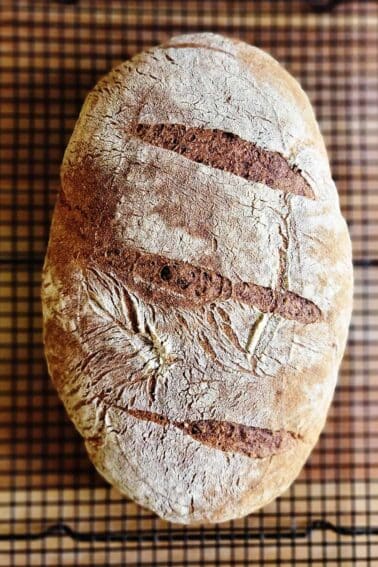

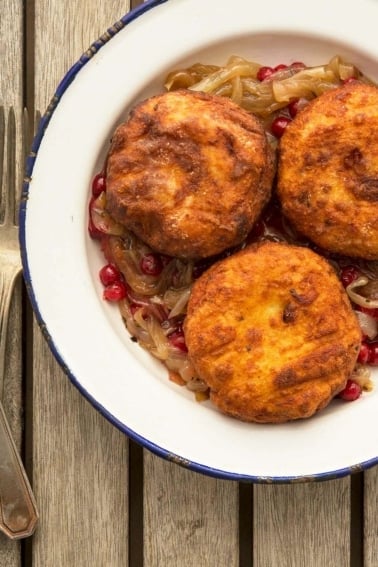
Hi Hank, My son and I shot two Mule Deer, almost 28 days ago. I got busy after processing them and forgot to process the Caul fat we harvested. The fat has been in a slightly bloody game bag inside an enclosed plastic bag in the fridge and/or possibly frozen when we were in the woods. I opened the bag this morning and started soaking the fat, no foul odor, mold, or generally anything unpleasant about it. We would appreciate your opinion on using it after this long in the fridge.
Alli: Er… that’s an awful long time. I’d be skeptical.
Hank,
Before reading your article on deer fat I was totally ignorant of caul fat. I would keep all the body fat, render it down, strain and use for patch lube for my muzzleloader.
This past Saturday I harvested a doe and the first thing I did after opening up the body cavity was to pull our the caul fat. The mistake I made was to put it in the same zip-lock bag as the heart. So instead of the beautiful white lace like the photo in the article I have pink lace after soaking and rinsing in cold water for a little while.
So a couple of questions: Can this still be used or will the bloodstain create a foul taste? Will continued soaking get the blood out or do you have any recommendations, other than to be more careful in the future?
Thanks
Geno: Sure, you can soak the caul fat in warm salty water, and that should take care of most of it. And warm, not hot.
My son is a chef and suggested caul fat to me for my Christmas stuffed pork loin. I was so excited to try it. However, I am finding in the Arizona desert not only is it not available, but very few butchers know what it is.
Great article Hank! One thing about caul fat that I noticed this year is later season deer yield far better fat. First one I shot this year in September (bow season in NC), the entire sheet fit in the palm of my hand. Almost no lacing and all membrane. The November deer, after the acorn mast had dropped, was fabulous.
Hey Hank,
Another great article. Something I never would have considered to use. I may give this a try next fall since I’m assuming bears don’t have this? Just a heads up, the banner ads on the site for Amazon are super disruptive to the reader and actually block the text every 20 seconds or so.
It makes getting through the article difficult and may turn folks off. Not sure to what degree you can control that.
God how much do I LOVE caul fat!!!
You’re giving all our secrets away! I actually absolutely loved this one, I only wish it was an easier ingredient to get. Hugs to you and Holly, do you know where I am in Eastern Washington if you ever come through ,you always have a room!
Robin! So good to hear from you! You’re near Spokane now, yes?
Good info. on caul fat however I`m not a hunter,where does one obtain it? I have eaten pork crepinettes and would like to wrap some sausage. Is there someplace in Sac. that sells it? I live in Woodland.Thanks.
Lowandslow: Ah, you’re around here. Most butcher shops will have it. Normally it will be frozen. I’d call ahead, because if they don’t have it, they can easily get it.
Thank you for this article. I’m going to send to so many cooks I know who are unfamiliar with it. The best stuffed pork loin I’ve ever done was wrapped in caul fat!
Another genuinely fascinating article, Hank – thanks for the tips!